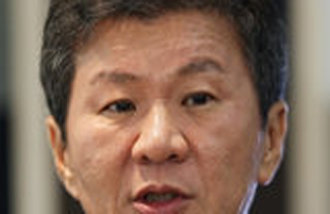Idealized peasant family paintings
Idealized peasant family paintings
Posted May. 02, 2024 08:00,
Updated May. 02, 2024 08:00

Eighteenth-century British painter George Stubbs gained fame as an animal painter despite no professional training. His horse paintings, backed by excellent anatomical knowledge, were very popular with nobles who enjoyed horseback riding. At the age of 61, Stubbs created a painting titled “Haymakers,” capturing the daily lives of farmers in a different approach from his usual style. What was the reason for the change?
The painting depicts a family carrying hay in a field on a clear day. The two women on the left are raking hay, while the men are stacking hay on a cart. On the right, two horses are waiting to pull the cart. The woman in the center, wearing a light blue dress, stands up straight, holding the rake handle with one hand and resting the other hand on her waist, gazing straight ahead. It appears like she is taking a break after work. They are struggling to make a living for their families and their community. The artist portrayed the farmers' families working in harmony very realistically, different from the images of aristocratic families that generally posed statically in portraits.
Did Stubbs paint this picture out of repulsion against aristocrats? Did he wish to express his admiration for labor or sympathy for poor rural farmers? Definitely not. He created the painting to meet the demands of his audience, the noble who considered rural landscapes romantic at that time.
Stubbs portrayed the life of peasants in an idealized way. Despite the hard work they are engaged in, the people in the painting are wearing clean and elegant clothing. The hats worn by women are decorative, rather than serving their purpose for work. The painter depicts the image of safe and idealized labor instead of the misery of hard work at that time. This stark contrast between the reality of the peasants and their idealized portrayal is perhaps ironic; after all, the people purchasing or appreciative of this painting would be the noble or the bourgeoisie, not the working-class people in the painting.
조보은기자 jbe020111@donga.com







